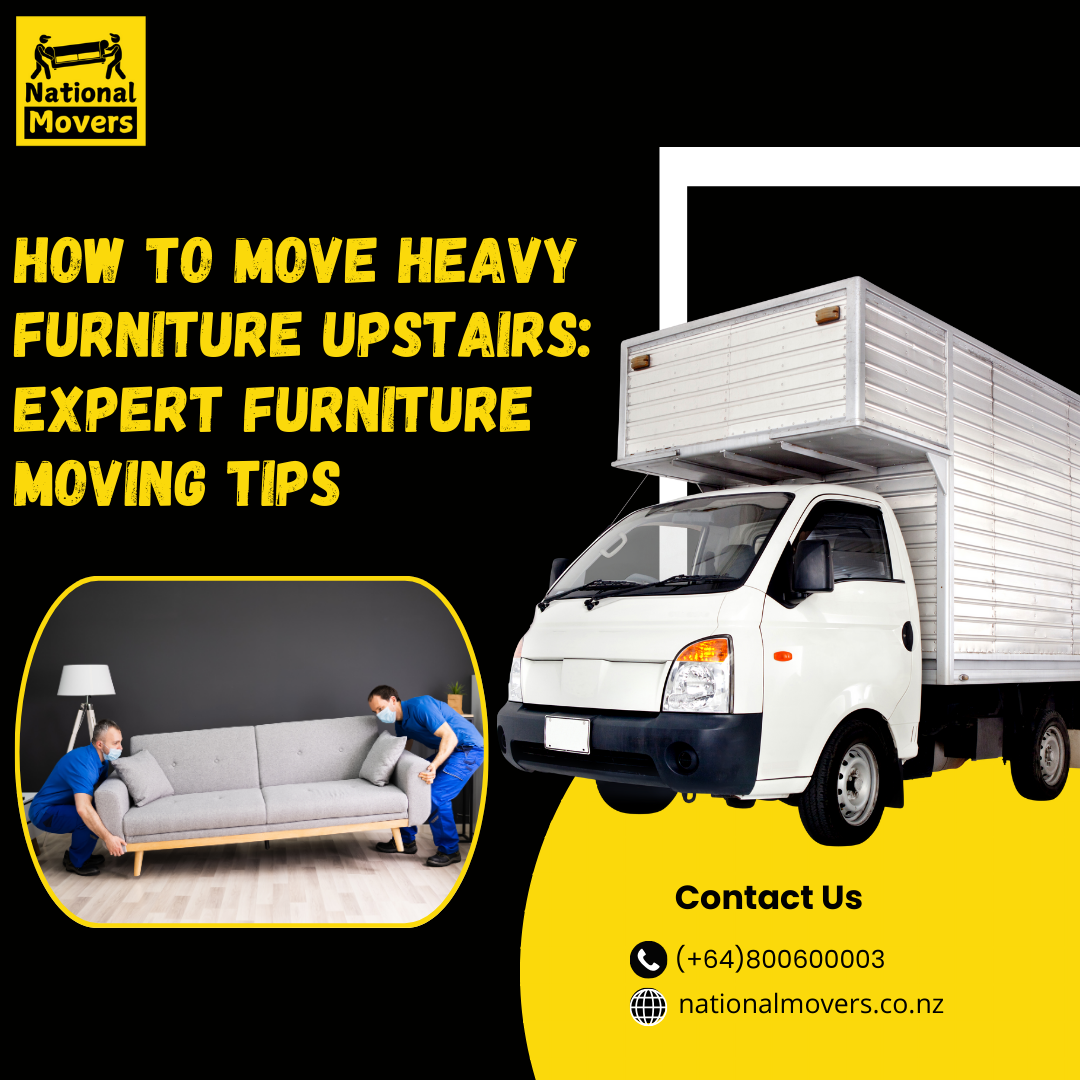How To Move Heavy Furniture Upstairs: Expert Furniture Moving Tips

Moving heavy furniture upstairs is one of the highest-risk tasks in Furniture Removals because it combines manual handling strain, slip/trip hazards, and confined-space maneuvering on steps and landings. The safest results come from disciplined planning, the right tools, and manual handling techniques based on New Zealand's good training guidance.
Plan Before You Lift
• Measure everything: height, width, diagonal of furniture; stair width; ceiling height; turns and landings. Confirm the piece can rotate through any turns without forced twisting or unsafe postures before attempting the move.
• Clear the route: Remove rugs, clutter, and door stops; ensure lighting is adequate on stairs and landings to prevent trips and slips.
• Assign roles and commands: Nominate a lead at the top or bottom, agree on simple commands (stop/down/up/rotate/pause) and hand signals; only involve personnel in the zone, with one person in control of the activity.
Protect Property Before Moving
• Pad rails, walls, and tight corners with moving blankets or foam; protect stair treads with non-slip coverings to reduce surface damage and slipping risk.
• Wrap furniture first: Use blankets, corner protectors, shrink wrap where appropriate, so load restraint (straps/grips) does not crush edges or finishes.
Use the Right Equipment
• Stair-capable tools: Use shoulder/forearm lifting straps, stair-climbing dollies, or powered stair climbers for tall or dense items to reduce strain and maintain control on risers.
• Sliding aids: Use furniture sliders or low-friction skids on flat approaches; never drag on stairs. Transfer to a controlled lift or stair-rated dolly before ascending.
• Hand protection and grip: Wear gloves for secure handling; maintain three points of contact on stairs when possible, and use spotters to stabilize the load.
Team Technique on Stairs
• Communicate every move: The lead calls the sequence before each lift/step; use short, deliberate steps and regular pauses to reset grip and posture.
• Maintain load orientation: Keep the heavy end low where feasible (e.g., tall wardrobes) so the center of mass stays closer to the lower mover for stability, adjusting for visibility and landing geometry.
• Control the landing transitions: At half-landings, park the item safely, regrip, and re-brief before attempting the next rotation or ascent segment.
Safe Manual-Handling Fundamentals
• Lift with legs, not back: Place the load nearby, avoid moving the neutral back and rotating; Swing legs to change direction instead of rotating the upper body under the load.
• Know limits and stop points: If the object exceeds safe handling capacity or requires awkward postures (e.g., extreme reach on narrow winders), reconfigure with additional helpers or mechanical aids.
• Pre-brief and timing: Count-in for each coordinated lift; if out of sync, command an immediate pause to reset stance and grip.
Navigating Tight Corners and High Bulk Items
• Sofas and dressers: Pre-plan tilt/roll sequence; remove feet/legs where possible to reduce profile; pad corners and rotate with micro-steps under command.
• Tall wardrobes and fridges: Keep the mass under control with strap assists; the lower mover takes more load switch positions on landings if needed to manage fatigue.
• Beds and mattresses: Bag and strap mattresses; use two-person carry with high/low grips to keep sightlines clear and reduce snagging on rails and balusters.
Site Safety Controls around Stairs
• Control the zone: Only those directly involved are in the stairwell; use cones/signage if working in shared access; ensure the area is well-lit and free of other traffic.
• Stabilize stops: When setting loads down on stairs or landings, ensure stable, level placement; use wedges/blocks to prevent unwanted movement before regripping.
• Weather and footwear: Dry wet treads promptly and use footwear with high-traction soles to prevent slips on varnished or painted stair surfaces.
When to Call Professional Furniture Movers
• Excess size/weight, fragile antiques, or complex stair geometry (tight winders, low headroom, glass balustrades) are high-risk scenarios where trained Furniture Movers Tauranga with stair-rated equipment and rigging skills reduce injury and damage risk.
• Teams trained in manual handling and site controls apply structured methods and have access to powered stair climbers, lifting frames, and protective site materials that are not typically available in DIY moves.
Expert Checklist: Step-by-Step Sequence
• Pre-measure, protect path, wrap item; brief roles/commands; stage equipment at base and landing.
• Test lift on flat ground; confirm grip and balance; initiate ascent with short, synchronized steps, keeping the load close and back neutral.
• Pause at landings to reset; protect walls/rails during rotations; maintain clear verbal control throughout.
• Set down safely at destination; unbag/unstrap and assemble only after confirming no strain injuries or property damage occurred during the carry.
Why These Controls Matter
• Manual-handling risk: Lifting/straining injuries are common in handling heavy items; proper technique and aids materially reduce back and soft-tissue injury risk.
• Controlled environment: Segregation, lighting, and a single controller for the loading/unloading zone are core WorkSafe good-practice measures that directly reduce incidents on stairs and landings.
For reliable, safety-first Furniture Removal and expert Furniture Movers trained in stairway moves and integrated planning that protects people and property, choose National Movers for professional support in Tauranga.
The Article "How To Move Heavy Furniture Upstairs: Expert Furniture Moving Tips" was originally posted here.

%20900-0633%20-%202025-03-28T125050.488.png)

Comments
Post a Comment